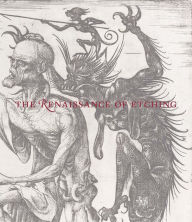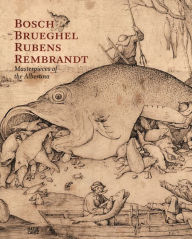Art in NYC: The Renaissance of Etching at the Met Museum
The Met Museum presents The Renaissance of Etching exhibition with works by Durer, Parmigianino, and Pieter Bruegel the Elder.
The exhibition is on view from October 23, 2019 – January 20, 2020
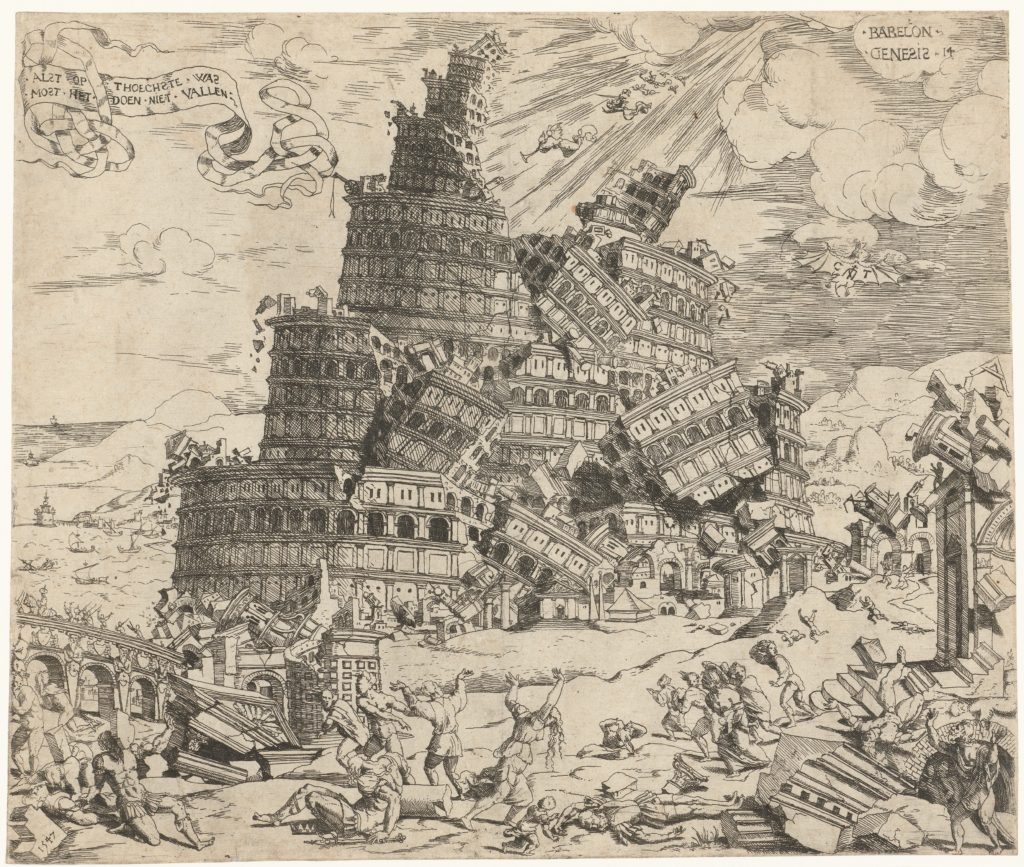
Organized by The Metropolitan Museum in New York City and The Albertina Museum in Vienna, Austria, The Renaissance of Etching exhibit delves into the discovery of the medium by an armor etcher in the late 15th century in Germany to its wide appropriation by the Renaissance artists all over Europe by the mid-16th century. An innovative approach to image printing flipped the old process of etching on its head. Before it was an expensive decoration on the metal armor worn by a few wealthy patrons, now the metal plate became a tool to produce print on paper. Once the process was fully developed, the medium got widely embraced by the artists as it made possible to produce large quantities of artwork relatively cheaply. Every artist working at that time period got involved in making the prints varying the colors and adding nuanced characteristics of the art schools and worldview.
The exhibition curators organized the works in chronological order starting from the German printmaker and armor decorator Daniel Hopfer who is credited with inventing the medium. He influenced Durer to start experimenting with the technique. Several of Durer’s phenomenal prints from The Albertina and other museums are included in the exhibition. Rapidly spreading across the continent, the art of etching was mastered in Italy by Parmigianino, the Renaissance artists in France, and later flourishing in the Netherlands where the printing shops employed the professional etchers to mass-produce the original drawings done by such masters as Lucas van Leyden, Peter Bruegel the Elder among many others.
There are about 125 artworks in the exhibition including the armor, etchings, drawings, metal plates, and engravings. It captures a fascinating time of rapid change in everything from the climate and weather patterns to technology, religious believes and a new societal order that swept the European continent from the mid-15th to mid-16th century. As the curators note, it may require a return visit to The Met to fully appreciate a vast gamut of visual information offered by the assembled collection.
Following its presentation at The Met until January 20, 2020, the exhibition will travel to the Albertina Museum on February 12 – May 10, 2020.
Stay in the know about future events and offers by subscribing to ARTS-NY newsletter Subscribe
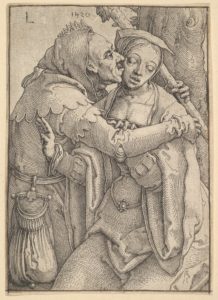
The technique of etching metal armor was known in Italy from the early 1400. By the late 15th century, the craft was well respected among German armor decorators. Daniel Hopfer, an armor etcher from the German town of Augsburg, started developing an innovative process of printing on paper from the metal plates. Stylistic evidence suggests that he was using the technology as early as 1500 and credits him with inventing the method. It is often thought that Hopfer taught Dürer the technique. The Met exhibition starts with the etchings by Hopfer produced around 1520. The oldest etching in the exhibition dating to 1515 is by Durer who made only 6 etchings between 1512-1515 and returned to engraving.
Unlike the engraving which required a special skill in handling the medium, the main advantage of etching was relative ease of learning the basic technique of image-making on the plate. However, the process still presented the risk of ruining the plate, and health and safety issues from working with the acid and the ground. Still, the ability to produce multiple quantities of high-quality images revolutionized the art market. Once fully set, the same plate could be used to produce up to 100 prints.
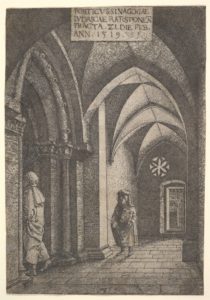
While the original plates used by Hopfer were made of iron, softer and rust-proved copper plates were brought into use by the Italian craftsmen. The accessibility of the medium and a cheap reproduction cost led to its strong popularity with almost every artist working in that period.
Albrecht Altdorfer further developed the technique and used it for more refined compositions. Two prints of the Old Romanesque style Regensburg Synagogue made by Altdorfer in 1520 are included in the exhibition. Altdorfer, who was on the town council and knew about the decision to expel Jews for the town, made the etchings right before the destruction of the venerate synagogue.
From Germany, the technology spread to Italy where it was enthusiastically used by the Italian masters. One of the most notable Italian master who took a close interest in etching was Francesco Mazzola known as Parmigianino (1503 – 1540), “the little one from Parma”. Working in Mannerist style, Parmigianino’s etchings display delicate compositions that were highly valued by the sophisticated collectors. Recorded by Vasari as “Rafael reborn”, there were high expectations for Parmigianino’s career. However, the war between papal and French armies disrupted the artist’s career in Rome and Bologna. His deep interest in etching led to the experiments in alchemy probably as part of his search for new materials to refine the etching process. Several of those prized works are on view in the exhibition.
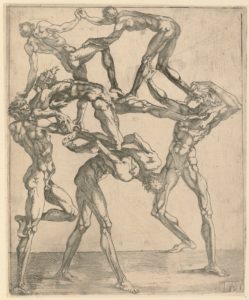
In France, the medium got its full recognition a decade later from 1540. The artists who worked in Paris and at nearby Chateau de Fontainebleau made fascinating compositions that further explored the possibilities of the medium. The works in the exhibition include the prints of the highly elaborate scenes some of them done after Michelangelo and Rafael.
From the mid-1550s, the etching as art-making had firmly established itself and was brought to the new production level in the Netherlands. With the growth of demand for high-quality art prints, there were specialty shops opening up at the centers of Netherland’s economic and cultural activities. Entrepreneurial printers and draftsmen in Antwerp would set up shops with the professional etchers who were using the original drawings by the Dutch and Flemish masters to satisfy the public interest in larger and more complex multi-plate prints.
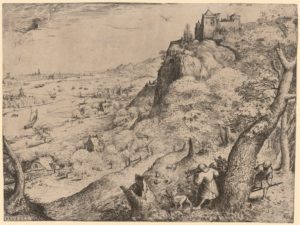
The only known etching made by Pieter Bruegel the Elder, The Rabbit Hunt, was printed at the esteemed Hieronymus Cock printing shop in Antwerp in 1560 and is included in the exhibition. The original drawings by Bruegel for the consequent etching at the Cock’s shop are also on view in the last exhibition gallery alongside the masterpieces by the professional etchers, like Peeter van der Borcht and the brothers Jan and Lucas van Doetecum. Depicting everyday scenes, political cartoons, and takes on the well-known proverbs, the prints produced in the shops of Antwerp, the major port city at the time, were widely distributed around Europe to feed the growing demand from the art collectors.
With so much history and details, the exhibition is a delicious treat for art lovers and history buffs. The Renaissance of Etching is on view at the Met from October 23, 2019 – January 20, 2020.
Stay in the know about future events and offers by subscribing to ARTS-NY newsletter Subscribe
